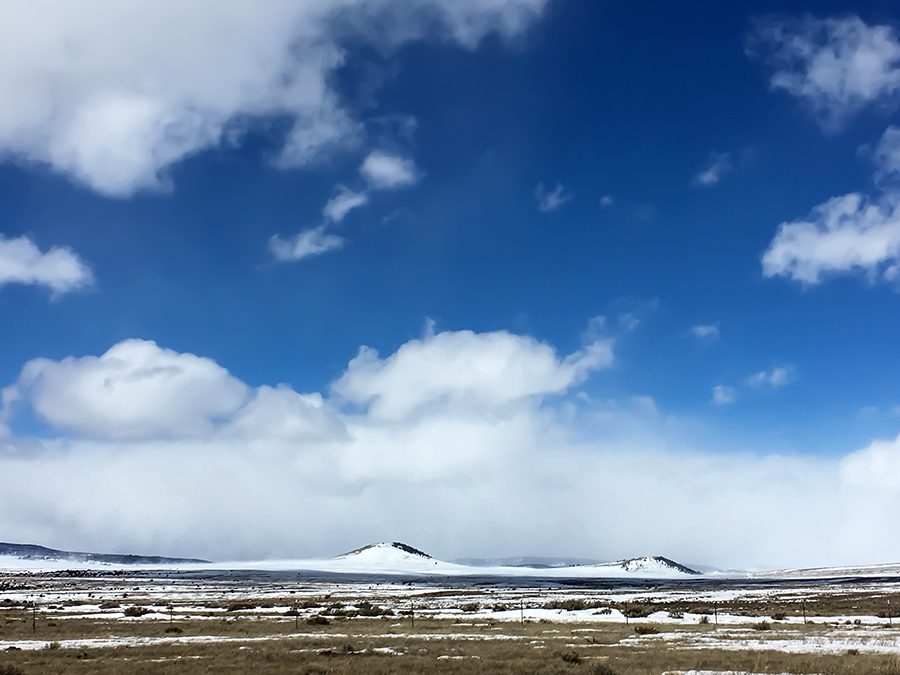I pulled off the highway at a certain spot near the foot of the mountain so we could pee. It’s maybe a hundred yards down this little dirt road to a big sign with all the regulations. Beyond that, the road continues into a wide, shallow valley and then disappears over the edge of the Taos Plateau. In seventeen years I’ve never been any farther down this road than to the sign (which I stood behind while my wife dropped trou beside the car) because I am an idiot.
This was eight thousand feet above sea level. The measure works because the world is mostly water—you might spend your life in the middle of a land mass, but still you know. The last time I stood next to the ocean was a few years ago in Maine. It was impossibly immense and terrible, a living thing that heaved and breathed and thrilled me to the core. Here no tenemos agua but there’s an ocean of air, and the high desert landscape rolls from the mountains to the horizon like a sea.
The wind was gusting over thirty miles per hour. Ragged snow clouds raked the plain below blue sky and sun. The drama and the scale was overwhelming. (It’s almost always like that here if you just get away from town.) The emptiness—in human terms—was comforting, and I didn’t want to leave. This is what I came for, I remembered. A window to the Unnameable.


.png)
Today Taos looked beautiful. Our junk is old, our mud organic and the double wides are gradually blending with the shape of the earth. Too many old cars and tires strewn about but we came home from some work in Los Cruces yesterday and that drive to the south was full of buildings that stiffly resist the vast landscape of tan dirt and short bushes. Why do people resist the landscape? Deserts bring out the worst in people. Yes, Taos needs walking paths and landscaping but its still back in the fifties as far as infrastructure is concerned.
I just cut out the Taos paragraph because it wasn’t working. But I think your comment still does!
You must log in to post a comment. Log in now.